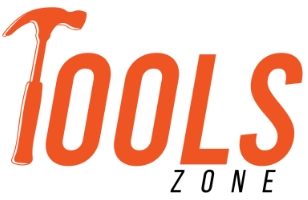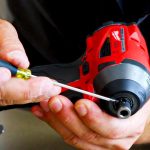Table of Contents
You may have seen a lot of power saws while surfing on the marketplaces. Before buying one, you must know which type of saw is needed for the specific project. Because each job requires different saws according to the object’s size, space, and maneuverability. Picking the wrong saw will cause trouble plus it won’t even fit in the workplace. In this article, we will explain what type of saws will be best for your projects.
Quick Cutting: Reciprocating Saw
If you ever have a project that needs rough and heavy cutting saws, you have several options. However, using a reciprocating saw can do your job very fast and efficiently with its compact design. This saw has a thinner saw blade, just like the classic handsaws. Powering the saw on, the blade starts to go back and forth to provide a high-velocity stroke. With that stroke, you can hold the saw on a thicker plank or board to pierce through it.
Gladly, the reciprocating saws can be powered through electricity and batteries. So, these are very compact and portable tools for demolition jobs and rescue. Moreover, these saws can reach the subtle corners and hard-to-reach areas, thus using them will give you some serious advantages.
Pile Of Wood Cutting: Table Saw
While dealing with very thick and heavy-weight lumber, you cannot drive the saw precisely to cut in a measured shape. In this case, a table saw is highly recommended. You may have seen them in saw meals and factories. This saw has a large table attached to it. With a high-performance motor, the saw rotates a disc or belt-like blade with a lot of teeth at a higher speed. If you push the wood, the saw will cut it apart in a straight line.
This saw is ideal for bringing wooden planks from trees. Hence, If your job is to deliver planks from trees, this saw is made for your convenience.
Curvature Cutting: Jigsaw
A curvature cutting is needed when you work with thinner boards and wooden sheets. In that case, a jigsaw can do your job with reliability. If you have never seen a jigsaw, this type of powered saw consists of a motor that drives a narrow blade in a rapid up-and-down motion. Or you can say, the reciprocating movement is similar to a sewing machine.
Furthermore, a jigsaw has a shoe or bed that is positioned on the top of the board you cut. And it provides high strokes to the upper direction through an electric or battery-powered motor. The sheet or board will be pierced by the blade keeping a very keen line.
The jigsaw needs to be driven manually. You have to draw the cutting line using a pencil to drive it precisely. More importantly, this saw is for trained carpenters who can give shape to the wood with their hands easily.
Thick Curve Cutting: Band Saw
If you put a jigsaw on a table, you get a band saw. Keeping the fun aside, bandsaws are one of the most used saws to make curvature in thick lumber and planks without breaking them apart and jamming the saw. The band saw usually cuts through a very thinner blade. You have to put the wood on a table and drive them forward to cut in or out of the cutting line.
As this saw can cut in curvature, be sure to use other tools to remove the stains from the edge. Because it leaves a serious amount of saw marks. Besides wood, you can cut off nonferrous metals with this saw. Thus, it will be wise to use this saw if you own a workshop.
Rough Cutting: Circular Saw
You will need circular saws to cut in a very rough and tough way. This saw can cut through thick wood using a disc-like metal carbide blade. The blade has large teeth which are protected by a blade guard. First, circular saws are very dangerous, so you have to put on protective clothes before starting them. Powering the saw, it immediately starts rotating the disc at a higher RPM, which can slash apart anything that comes in front of it. The saw has a fence and a shoe under it which is placed on the wood to start cutting by pushing the saw following a line.
According to the thickness of the wood, the saw has height and bevel adjustments to keep the blade exposed. Keeping the blade open and measuring the plank depth is ideal. Keep in mind that the saw gives a serious kickback, so always be attentive during cutting. Plug out the cable to avoid any unwanted accidents when it’s not in use.
Tree and Lumber Cutting: Chain Saw
Trees and logs are very wide, so any normal saws cannot cover all of the areas for a precise cut. This chainsaw is designed to cut this kind of wide log.
First, the chainsaw is equipped with a motor and a guide bar. There is a chain with metal teeth twisted with the guide bar. With the help of the motor, the chain rotates at a higher RPM and starts cutting immediately.
Therefore, you just have to hold the saw on the object intended to cut off. But be careful because the chain is tensioned to the guide bar and if it gets loose, it can sprinkle right on your face and body. Hence, if you are a regular woodcutter, the chainsaw can be your favorite work buddy for its extraordinary performance.
Angular Cutting: Compound Miter Saw
Imagine those times when you need to cut any side of a plank from an angular position. No regular saw can perform this task smoothly other than a compound miter saw.
A miter saw has a blade placed on a swing arm that pivots left or right to produce angled cuts. It has a bevel adjustment mechanism to angle the saw from 0 to 45 degrees or a higher angle. This multi-angular capacity lets you cut your wood and join them with other planks to make a solid wooden box with a strong joint.
The saw is mainly used by carpenters, craftsmen, and woodworkers. The miter saw functions admirably in making cuts for door jambs, picture outlines, window housings, and crown forming. So, if you have to deal with this kind of cut, this saw is for you.
Metal Cutting: Multi Saw
Multi saw is ideal for cutting metal sheets, pipes, rigid hoses, and similar items. This is one of the most common types of saws. Being lightweight and versatile, this saw is capable of cutting wood, metal, plastic, and other materials using very small teeth-cutting blades. And this saw uses high-revolution carbide blades for cutting.
You need to use a lot of hand strength to cut thicker elements with this saw. Otherwise, keeping the saw in a straight line will be harder than ever. Thus, if your job is to cut thin metal or plastic pipes and sheets, this saw is the right pick for you. That was all about the type of saw that will be best for your project. These power saws are very handy and they use either AC or DC power to be operated.
Almost all of them come cordless to make your project in remote places quite efficient. Thereby, if you are conducting cutting jobs frequently then it’s is essential to know what types of saws are the best for your project.










Leave a Comment